

Armand Charlet
Born: February 9, 1900
Died: November 28, 1975
in Argentière, France
Died: November 28, 1975
in Argentière, France
Armand Charlet, known for his talents as a glacier climber, is an outstanding rock climber. Born in Argentière on February 9, 1900, he is considered the greatest guide of his generation, with more than three thousand ascents.
The Aiguilles Rouges, just above his home, is a fantastic training ground, where he often trains, with his brother Georges, also an outstanding guide. Armand's prodigious speed of execution, his sense of the route and his perfect knowledge of the terrain enabled him to win most of his great firsts in a single day.
He will do some of his biggest races outside of his professional activity, often with his friend Camille Devouassoux. Thus, in 1928, they embarked on a race that was a few steps ahead of mountaineering at the time: the Verte via the Nant Blanc side of the Aiguille Sans Nom. Very long, because it starts under the Col des Drus, it imposes very high glacial and rocky difficulties, and Armand will admit to having reached his limits there. Camille "Pica" often told the famous anecdote where Armand climbs on his head, crampons on his feet, to get out of trouble.
The great Argentière guide climbs the routes of the Aiguille Verte a hundred times, by no less than 14 routes, including 7 new ones. Apart from this summit, among his greatest successes, there is also the conquest and the crossing of the Aiguilles du Diable.
The second part of Armand Charlet's career will be decisive for the guiding profession. He is one of the first to stress the need for a rational, unique formation for all guides. He has the legitimacy to do so, and when the national guide diploma was created in 1948, he had already joined the National School of Skiing and Mountaineering (ENSA). Professor-master in charge of training guides, he will remain at the helm of teaching for many years. He will leave his strong mark on the profession. At the same time, he devoted himself to the life of the valley, took care of the maintenance of the refuges and was a member of the cable car commission.
He died on November 28, 1975 in Argentière, aged 75.
Authority in the world of mountaineering, as much as in his valley, demanding with him as with others, Armand Charlet is the undisputed leader and beacon of his generation. Busk Douglas faithfully transcribes the memories of the great guide of Argentière in his book: "Armand Charlet, Portrait of a guide".
The Aiguilles Rouges, just above his home, is a fantastic training ground, where he often trains, with his brother Georges, also an outstanding guide. Armand's prodigious speed of execution, his sense of the route and his perfect knowledge of the terrain enabled him to win most of his great firsts in a single day.
He will do some of his biggest races outside of his professional activity, often with his friend Camille Devouassoux. Thus, in 1928, they embarked on a race that was a few steps ahead of mountaineering at the time: the Verte via the Nant Blanc side of the Aiguille Sans Nom. Very long, because it starts under the Col des Drus, it imposes very high glacial and rocky difficulties, and Armand will admit to having reached his limits there. Camille "Pica" often told the famous anecdote where Armand climbs on his head, crampons on his feet, to get out of trouble.
The great Argentière guide climbs the routes of the Aiguille Verte a hundred times, by no less than 14 routes, including 7 new ones. Apart from this summit, among his greatest successes, there is also the conquest and the crossing of the Aiguilles du Diable.
The second part of Armand Charlet's career will be decisive for the guiding profession. He is one of the first to stress the need for a rational, unique formation for all guides. He has the legitimacy to do so, and when the national guide diploma was created in 1948, he had already joined the National School of Skiing and Mountaineering (ENSA). Professor-master in charge of training guides, he will remain at the helm of teaching for many years. He will leave his strong mark on the profession. At the same time, he devoted himself to the life of the valley, took care of the maintenance of the refuges and was a member of the cable car commission.
He died on November 28, 1975 in Argentière, aged 75.
Authority in the world of mountaineering, as much as in his valley, demanding with him as with others, Armand Charlet is the undisputed leader and beacon of his generation. Busk Douglas faithfully transcribes the memories of the great guide of Argentière in his book: "Armand Charlet, Portrait of a guide".
Movies for Armand Charlet...
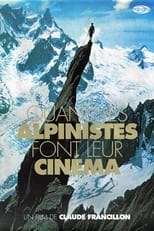
Title: Quand Les Alpinistes Font Leur Cinéma
Character: Self
Released: January 1, 2000
Type: Movie
Many mountaineers as part of their activity have used cameras and films to allow us to participate through images in their adventures and their emotions. Many of them have become true film professionals: Joseph Vallot, Lionel Terray, Marcel Ichac, Renè Vernadet, Jean Afanasieff, Pierre Royer, Denis Ducroz, Kurt Diemberg and many others are among the conquerors of the image of the mountain. The film depicts the passion of these men on the highest mountains in the world... behind the lens.

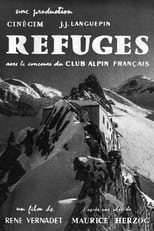

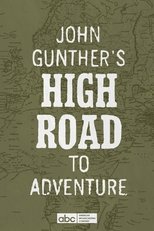
Title: John Gunther's High Road
Character: Self
Released: September 7, 1959
Type: Movie
John Gunther, a great traveler in many parts of the globe, presented on the American ABC channel the documentary program "John Gunther's High Road" from September 7, 1959 to October 1, 1960, namely 30 episodes. Two adventure trips filmed in distant places were broadcast: The first documentary film was shot exclusively for the show and the second film offered was a great classic adventure or exploit film by another director.


Title: Des Hommes Et Des Montagnes
Character: Self
Released: January 1, 1953
Type: Movie
History, advice and demonstrations of mountaineering in the Mont Blanc massif by the renowned guides of the National School of Ski and Mountaineering from Chamonix. The film starts with an historical summary illustrating the aspirations and methods that lead man to conquer the mountains. Armand Charlet teaches mountaineering techniques and takes his students to the field for glacier or rock exercises. Gaston Rebuffat makes demonstrations of particularly dangerous climbs. At altitude, people move in solitude, cold and silence, like circus acrobats without spectators, but nothing stops the modern mountaineer.

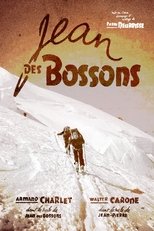
Title: Jean des Bossons
Character: Jean des Bossons
Released: January 1, 1947
Type: Movie
Jean des Bossons is a documentary-fiction which recounts the activities of a high mountain guide in 1947. Around Chamonix Mont-Blanc, the guide Jean des Bossons, interpreter by the mountaineer Armand Charlet, accompanies on mountain hikes, Jean-Pierre, an apprentice guide. The novice, skis on the shoulder, is already clumsy. The professional taught him how to travel on skis uphill and downhill, then mountaineering in ice and rock parishes. By dint of training, Jean-Pierre has made it his job. Guides are also lifeguards. A group went to a glacier to rescue a man who had fallen into a crevasse. During this rescue, Jean des Bossons is the victim of an accident. A drama that prevents him from practicing the profession, but not climbing. The man sinks into the fog and Jean-Pierre cannot find him.

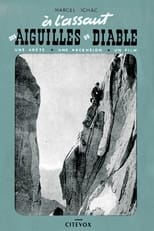
Title: A l'Assaut Des Aiguilles Du Diable
Character: Self
Released: January 1, 1943
Type: Movie
Marcel Ichac accompanied the mountaineer Armand Charlet, in 1943, in the repetition of the first crossing of the Aiguilles du Diable that the guide of the Chamonix valley had made in 1925. A roped party joined on snow and ice the Col du Géant, reached at the Mont-Blanc-du-Tacul stop and on the Col du Diable. The men cross the needles by climbing chimneys, cracks and abseiling walls. They access the eastern slope of the Mont-Blanc massif which offers a panorama of the Grandes Jorasses and Mont-Blanc. Armand Charlet was the first to reach the summits of four needles above 4000 meters: the Devil's Horn, Pointe Chaubert, Pointe Médiane and Pointe Carmen; he also tells how he successfully climbed the furthest, the Isolated. Marcel Ichac shot these scenes as close as possible to his subject, he responded with this film with a “truth” cinema, the principle of which we find in his later productions.

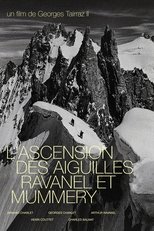
Title: L'Ascension Des Aiguilles Ravanel Et Mummery
Character: Self
Released: January 1, 1924
Type: Movie
"The ascent of the Aiguilles Ravanel and Mummery", climbed by young guides in cycling pants: The brothers Armand Charlet and Georges Charlet, Arthur Ravanel, Henri Couttet and Charles Balmat. The film was shot by Georges Tairraz II, Chamoniard mountain photographer, representative of the third generation of a family line of mountain photographers and filmmakers. George Tairraz II's film will lay the groundwork for a French vision of mountain film; In the 1930s, a French school of mountain cinema emerged, less expressionist, more stripped down and realistic than the German school. These are the films of Marcel Ichac, Roger Frison-Roche, Samivel, Georges Tairraz II, etc. It develops according to the principles set by Marcel Ichac, in opposition to the German school. It is both about getting out of the dramatic vision of the mountain and placing the mountain and the climbers at the heart of the plot.

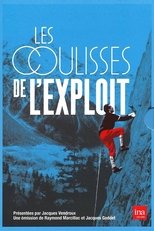
Title: Les Coulisses De L'Exploit
Character: Self
Released: December 31, 1969
Type: TV
"Les Coulisses De L'Exploit" was a French television program of sports information created by Jacques Goddet and Raymond Marcillac, and broadcast on RTF Television then on the first channel of the ORTF from December 13, 1961 to August 16, 1972. The principle of this program is to report on sports news but also to meet men and women performing exceptional feats. According to Raymond Marcillac: "Competitive sport is not our only field of action. It never has been. We want to discover beings whose life is enriching, exhilarating; men who have accomplished acts that can be offered to our admiration without reluctance."
